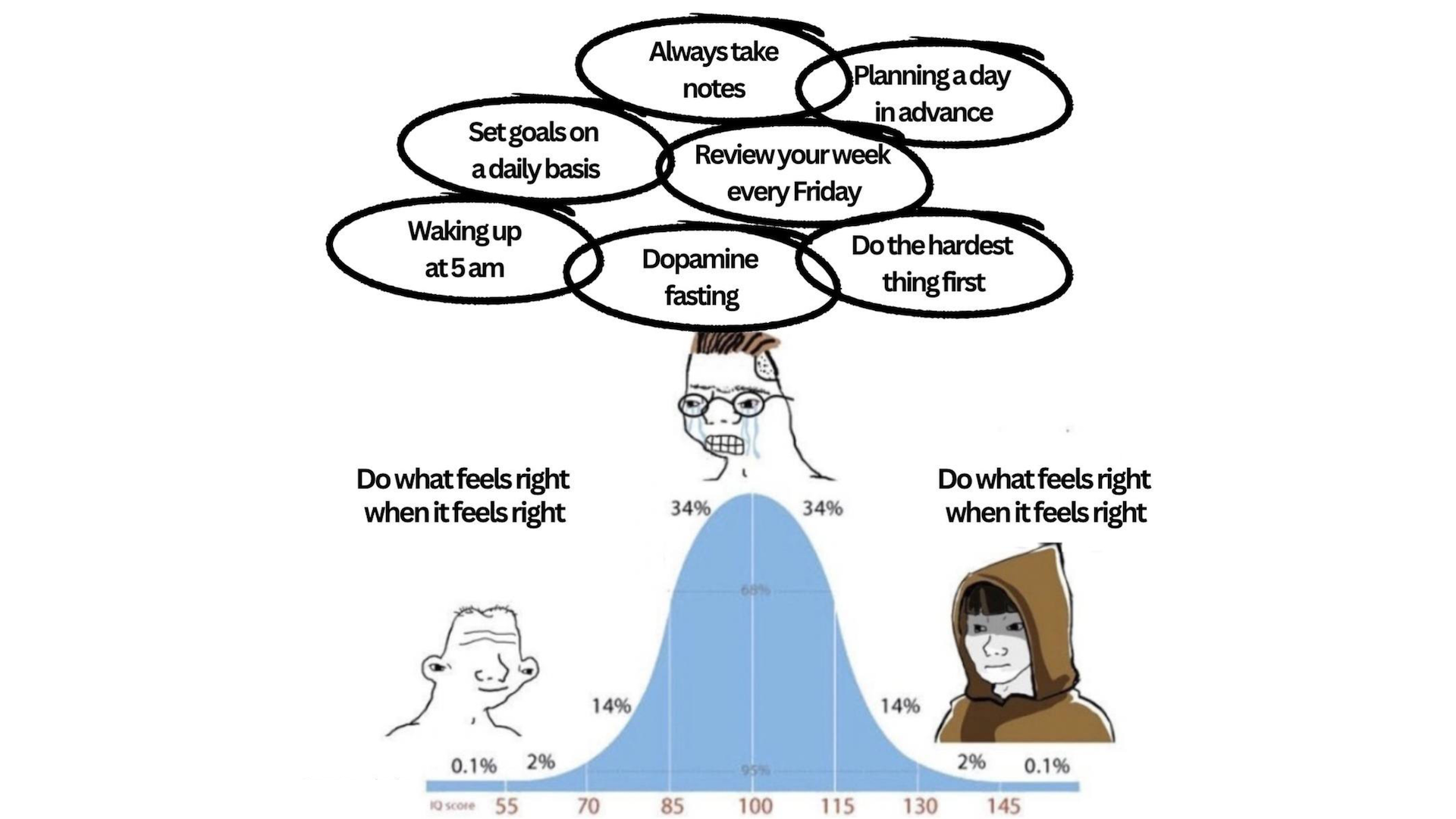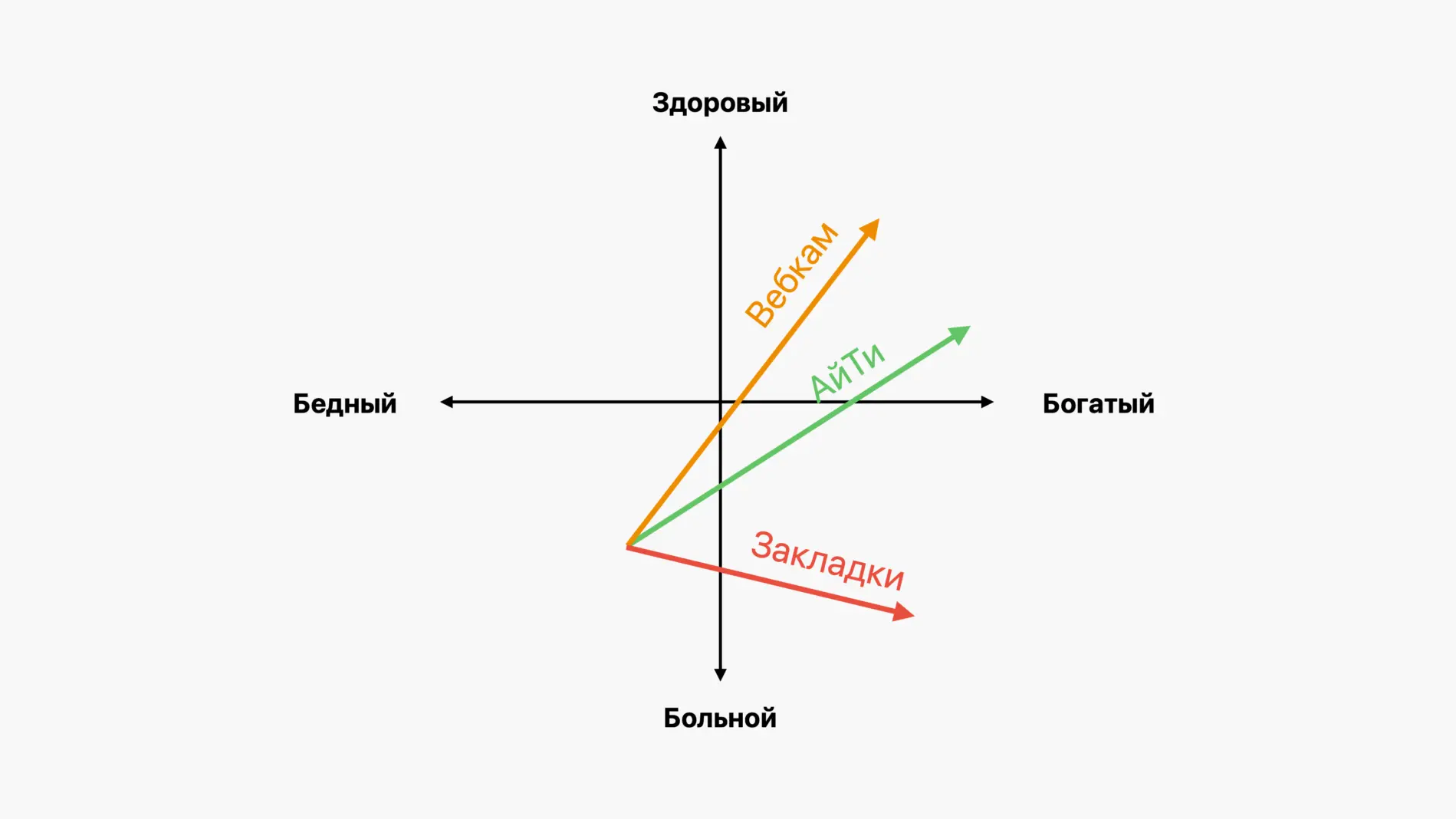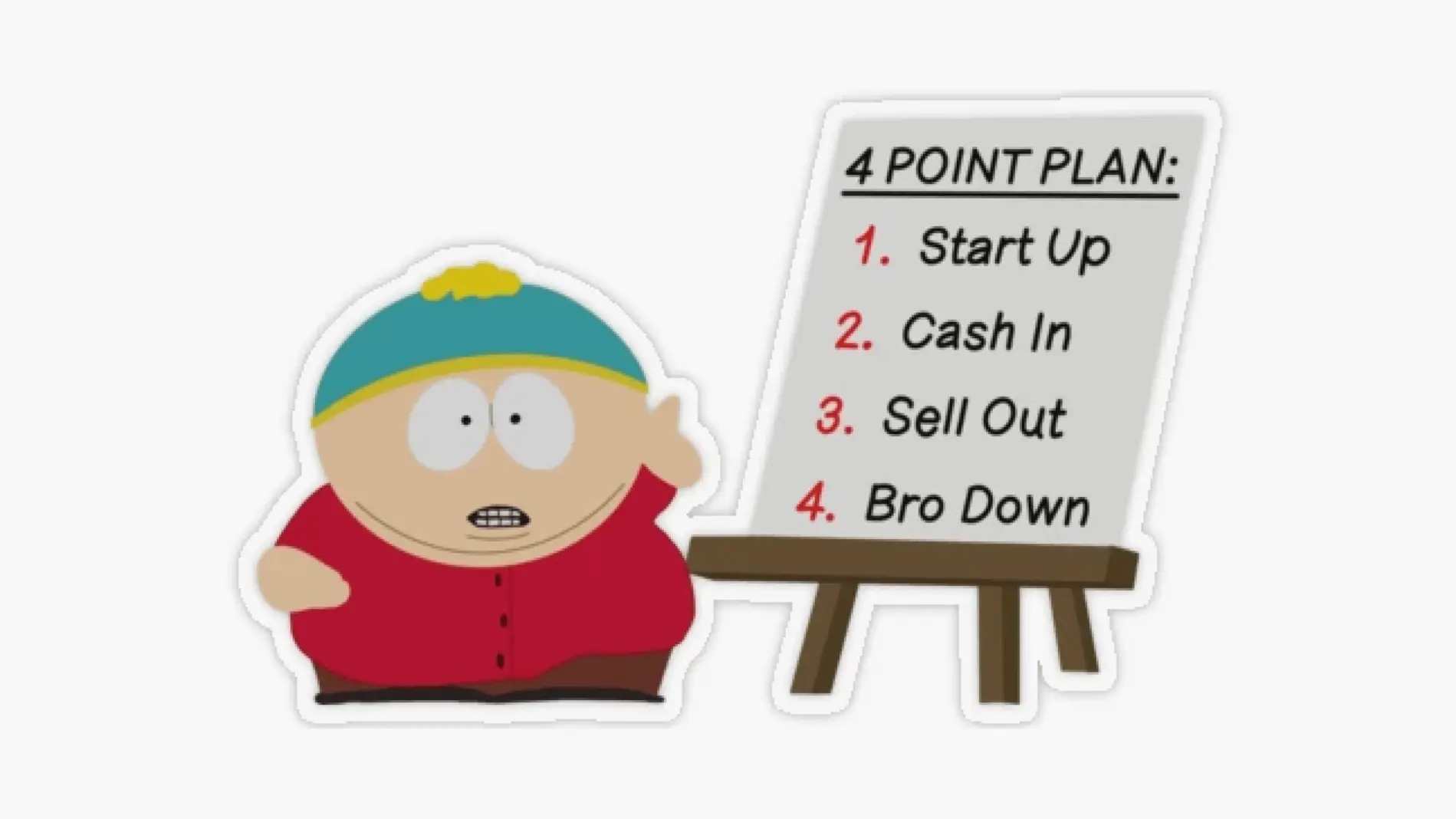How I easily set goals for the year after 10 years in IT
The beginning of the year is traditionally a time of thousands of posts and articles on how to set goals for the next 12 months. There are usually two chairs to choose from: either an enterprise-level ERP system or semi-esoteric visualization. I want to share an option somewhere in the middle with a minimum of nerdiness and an emphasis on practice, flavored with a drop of theory.
I have always been interested and inspired by stories of people who have a clear plan for life. Only when I tried to implement their methods did I realize that either this sounds like a full-time job for an individual, or it all ends at the stage of sending signals into space. In both cases, achieving the goals themselves fades into the background.
I wanted to see real improvements in life without a schedule in Excel and other pornography. And it just so happened that over the past 10 years in IT, I have observed (and participated, whatever) how both startups and corporations plan. So one day I decided to combine the personal with the work and ended up with a hybrid of both approaches with a tolerable amount of professional deformation (I hope).

For what?
The idea behind personal planning is to set direction, simplify your decision-making process, and live a meaningful life today.
Our resources are limited, be it time, money or the hair on our heads (sorry, this is personal). Even the energy for thinking during the day is limited, and most of the time it is better to have a ready list of tasks and a direction in which to run.
Your brain is designed to create ideas, not store them..
Jason StathamDavid Allen
In general, we will never be able to get all our tasks done, we just need to accept this thought and focus on what really matters. At the same time, it is important to see progress, because the thoughts of “What the hell am I wasting my life on?” quickly take on a rather gloomy hue.
Mission
In companies, it is customary to start long-term planning with a mission, what the company lives for. More and more often I see that this is becoming popular among individuals.
Frankly, I think it would be more truthful to say that the mission of most people and businesses is to make a lot of money and ride a lamb, not to make, say, accountants happy. But I admit that I’m just not that full of Maslow’s pyramid yet.
One way or another, I leave this part to the energy coaches from Bali, who have multiplied there in recent years.
Desired lifestyle
Let's remember 9th grade geometry: a vector starts at point A and tends to point B. Our development can be represented in the form of such a vector. If everything is clear with point A (this is where we are today), then the end point is not always obvious.
For me, the main step at the beginning of planning is always to create a compelling picture of the future (a vision of how I would like to live in a year), and only then work backwards to understand what actions and knowledge will be required for this.

Planning from the end solves an important problem – the dissonance between the chosen path and the final result. When we want to achieve something, there are always many ways to achieve it. If you plan from today to the future, the choice is greatly limited by the path you are already on. Let's be honest, you can hardly become a multimillionaire by building a career as a teacher in a rural school.
The theory has been discussed, let's get down to practice. For this exercise, it is better to set aside a day or two for yourself, seclude yourself from your surroundings and spend time in noble thoughts. Sit in a coffee shop, take a walk in the park (this is not investment advice for those who have -30 outside). It is important to keep distractions to a minimum. Ideally, cover all your basic needs to the fullest, so that your dreams contain fewer lobsters and tanned beauties, and more achievements.
So, let’s imagine that the year has passed in the best way for you and everything that was planned turned out to be.
What is your typical day like and what do you do?
Who is around you?
What have you already achieved and what do you want to achieve?
What is definitely missing from your life?
What is your income level and satisfaction with your career?
How do you feel and how do you feel?
Do you perceive information better visually? Make yourself a collage.

And finally, a couple of tips:
Don't try to predict the future – nowadays it is impossible to predict what will happen in a month, let alone in a year. In other words, the form should be primary, not the specifics. For example, you may not know what city or country you will be in, but understand that there should be a lot of sun and nature there.
Give yourself permission to not immediately know what you want. Give yourself time to think and reflect. Take a break and come back to planning when new ideas arise.
Well, and most importantly – Don't forget that you need to create a compelling vision of the future that evokes an emotional response. If you, like Stanislavsky, look at your image of the future and think: “I don’t believe it!”, then it will be very difficult to force yourself to move towards it.
For experienced strategists, you can do the task under the asterisk and think additionally about a longer period: 5-10-15 years. The more such images you have for different periods, the more accurate your vector will become. For example, if in 5 years you see yourself as a father of three children, then it is better not to have a vasectomy this year.
Setting non-goals
Now that we have a vision, it's time to break it down into specific goals. In a cultural society, it is customary to describe them according to SMART, that is, so that they are specific, measurable, achievable, relevant and time-limited. But what if I tell you that you have read the article about goals to the middle, but there will be no goals in their classical sense?

The word “goal” at some point became a buzzword, and who puts what meaning into it is no longer clear. Often it mixes at least two different, in my opinion, things: what you want, and the metric by which you should understand that you are going in the right direction.
Why do I think this is a bad practice? It is very difficult to stay motivated if the goal does not touch the subtle strings of the soul. For example, I work for an American company, and I have a real need to improve my English. In this case, a good SMART goal might be “pass IELTS score 8+ by November 2024.” Does she motivate me? Fuck it there. I just want to feel as free when talking with English-speaking guys as in my native language.
Every time, going towards such an “indirect” goal, I will need to remind myself that in fact it’s not about a piece of paper with a score, but about that inner feeling that I really want to experience. Besides, let's be honest, only a few will want to sit and describe each goal so meticulously; they would rather hammer in the bolt and continue the Brownian motion.

Does this mean that goals are not needed at all, and this section exists because someone paid me for the number of characters? No, either, but I would still insist on dividing this concept into metrics and, say, the desired feeling.
The difference between them is that a metric is some kind of quantitative proof that we are going in the right direction: for example, kilograms lost, subscribers gained, or money earned. The desired sensation is a certain state that really lights you up and gives you an emotional response. For example, I have a good body and I feel attractive, or I work for myself and only do projects that inspire me.
The metric is needed for the rational part of our thinking (we will discuss this part another time), and the feeling is more understandable for the autopilot, which works most of the time. That's all mathematics.

This is where our vision comes in handy, because in essence it is a mix of the states we strive for (and topics for discussion with a psychotherapist); all we have to do is extract them from the general mess and prioritize them.
You will need priorities in order not to find yourself in a situation where there are a lot of plans, and it is unclear what to take on, because there are always more opportunities than can be used. For myself, I realized that it is better to concentrate on a couple of things, but have enough energy and strength to make a breakthrough and get closer to the desired feeling.
How much will it be in numbers? Through trial and error, I realized that for me there is one main state and two additional ones. I advise you to start with exactly the same set, then, if anything, adjust it to suit you. By the way, this does not mean that you can’t do anything at all beyond these three points, but when a choice arises about what to do, it will be much easier to do it without having to waste willpower on making a decision.

Well, enough theory, now laboratory work. For this exercise you will need a pen and a pack of sticky notes (or any similar app).
We re-read and scroll through our vision in our heads, and then write down all the main conditions. Ideally, no more than 10, otherwise it will be difficult to work with it. Here it would be nice to turn on the little critic and throw out any crazy stuff like “satisfaction from the Reich gold found at the dacha” or something that, compared to the rest, doesn’t really light up the eyes.
Let's remove one of our wishes from the list. You must process this decision through yourself and try to feel that you are really giving up on it. We turn the sticker over and number it last in the list (i.e., if you have 8 stickers, then write the number 8).
We repeat the previous point. We select, turn over and write down the next number, then again… Well, you get the idea. Repeat until you run out of stickers.
Arrange the stickers in ascending order of numbers. The resulting priorities are guaranteed to surprise you (if not, I'll be ashamed).
Finally, We write out the first three desired states for ourselves and focus on them all year.
This is bullshit, kids.
We are working on a strategy
Now that we know what the desired future looks like and what the key sensations are in it, we can begin to think about how to get there. But the truth is that trying to determine your actions for the next 12 months is not only unrealistic, but also pointless. In 365 days, so many events will happen that they are guaranteed to confuse all plans.
In my opinion, for personal development, it is enough to have a direction and an understanding of what paths can be taken to get there, and the details can be figured out as you go. For example, in my vision of the future, I feel energetic and physically resilient, which means I need to lose weight, exercise regularly, etc.
I think that everyone has such an approximate scheme in their head, and we will unwind it. It will be enough to just write it down on paper, figure out how it fits into the vision, and think about what other options are there? What can help along the way? What can interfere? What stages does each path consist of?
Thus, we will receive a brief formulation of an action plan on how to get from the current moment to a vision. Without details, but so that the main idea and meaning are clear. This is not a task list, but it should look logical and understandable.

For example, let’s imagine a strategy for how one could get into IT: I work at my current job to pay the bills ⇒ after work I take programming lessons ⇒ in six months I start going to interviews for a junior position ⇒ I change my profession ⇒ $300k/sec.
This strategy may seem primitive, but let's compare it with the plans of some serious guys, for example, with Tesla master plan:
Make a sports car.
Use that money to make an affordable car.
Use that money to make an even more affordable car.
In the process, provide emission-free power generation options.
It seems that if Tesla had enough of this to become the most valuable auto company, then learning English or making a sales plan is definitely enough. The main thing is to understand where you are going and what the main milestones are along the way.
Celebrating achievements
Bonus part. This idea came from my school days, when I spent days on end playing computer games. Many games had achievement systems that forced you to overcome or hustle. They were not mandatory, but you felt proud of yourself. Here I mean real old-school achievements, and not your modern-inclusive press X to win.
So, I started thinking, what if you give yourself ideas that you can put a bolt on with a pure soul, but if you do, then summing up the year you can tell yourself

It is worth noting that in the games the achievements were the same for all players, but in life, of course, they should be as personalized as possible. Achievements can be opposite things for different people, and that's okay; You shouldn't adapt to others.
For example, speaking at a conference would be an achievement for me. For those who do this regularly, this is such an achievement, but for me, with my stage fright, it will be a big leap. For you, it can be anything: climb Mount Kilimanjaro, take part in an orgy of dwarfs, run a marathon, tell your boss what you've been doing, live for six months on unemployment benefits… I think it's clear here.
The main thing is not to forget that these are bonus points; even if you don’t do any of them, this should not in any way affect your sense of self at the end of the year and should not hang over your soul throughout it.
PS
As you can see, planning is not always long, difficult and stuffy. If you still find it difficult, then you can start with a vision and do as many exercises as you have the moral strength to do, even if the first exercise becomes the last.
If just yesterday you were wandering through life like a restless person, and today you thought about just the vision of your desired future – that’s already wow. When you have strength again, you can come back and think about your next steps. Remember, there is no correct solution in these exercises, do it as you like.

And finally, plans are good, but don’t forget to move your pelvis in the right direction. After all, we are not at a marathon of desires; the universe itself will not reward.
Initially, I planned to add to the article examples of what the results of planning look like and how to move from plan to action, but I realized that it was turning out to be some kind of crazy longread. So I’ll publish the materials that didn’t fit separately on my site. in telegram channel. There I write about life through the prism of an IT manager and programmer: I experiment with the use of work skills in everyday life, I write in simple language about flexible thinking, achieving goals and the transition from chaos to order. If you found the article interesting, I would be grateful for your subscription.




